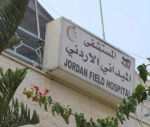You are here
Public awareness: A key element in today’s disaster management
Mar 02,2022 - Last updated at Mar 02,2022
In almost all cases, employees within organisations, as well as the general public who consists of children, elderly people, and other groups with special needs are the most vulnerable when disasters and emergencies occur as they often encounter these incidents unequipped with the immediate and necessary tools and resources, and unaided especially when their governments or organisations are defenceless/exposed themselves.
Resilient enterprises and communities however are those which are characterised by being able of functioning well under stress, responding effectively and sharing information more responsibly and flexibly in crisis times. Community resilience however cannot be created without community engagement which in turn cannot be achieved without public awareness as a foundation.
It has been noticed that the topic of public awareness, in the context of disaster and emergency management, is still underexplored especially from a practical perspective and even what has been published in this field is still encapsulated within a theoretical boundary paying less attention to the significance of transforming theory into practice and the potential consequences of this.
The current COVID-19 pandemic represents a special case in this regard. Several countries including the developed ones found themselves struggling and in need to impose curfews, lockdowns and restrictions without explaining clearly the purpose and the expected outcomes of these actions to the public. The general public had no choice except following these mandatory restrictions blindfoldly. Later on, countless demonstrations calling for breaking the lockdowns and ending the “unnecessary” social closures were ignited causing severe disputes with local authorities worldwide.
In view of the reluctance of some governments to take the lead in initiating practical public awareness programmes, a shift towards community-based approaches to disaster and emergency management has been called for. A society with higher levels of public awareness is more capable to demonstrate higher levels of participation in resource identification, vulnerability assessments and coping mechanisms which in turn will enable the establishment of more hands-on planning systems tailored specifically to the needs of the society.
Community based approaches lay emphasis on people within a community who should mark the starting point of management (i.e. first line of defence) and who better know their own needs and priorities when disasters or crises occurs.
A remarkable example which demonstrates the value of learning by experience is the case of the “Huang He” River in China. In 1933, the Huang He flooded. It swept through towns, villages and farmland. It killed thousands of people and left millions homeless. For hundreds of years, the people who lived along the Huang He tried to find ways to control the frequent river floods. However, the silt continued to cause the level of the riverbed to rise over the years. The same disaster occurred annually and caused the same levels of damage. After many years, people recognised (by learning from the previous experiences) that the best way to mitigate future floods is by planting trees and other vegetation along the river. Plants help to absorb rainfall and reduce soil erosion that washes silt into the river.
During the COVID-19 period, one of the aspects that were observed in Jordan is the willingness of people to voluntarily get vaccinated, which reflects higher levels of awareness concerning the value of the vaccination. This indicates that people are likely to become more responsible if they receive the necessary and adequate amount of information. Government efforts during the COVID-19 towards public awareness were this time exceptional.
One of the questions that might be asked here is what was different about the COVID-19 pandemic so that the government paid extra attention towards public awareness compared to previous crises the country went through and whether this practice will be sustainable and become part of the best practices in disaster and crisis management adopted in Jordan.
The writer is an associate professor of Risk Management at the American University of Madaba. He has an MBA from Coventry University, UK and a Ph.D. in Risk Management from the University of Huddersfield, UK. He is currently the dean of Scientific Research and Graduate Studies at the American University of Madaba.











